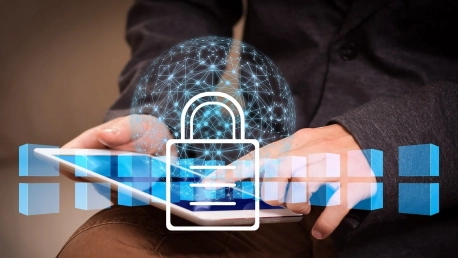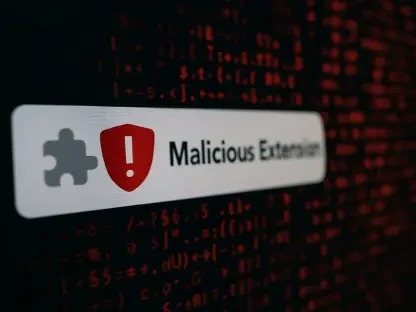In the realm of today’s digital economy, intellectual property (IP) is a cornerstone of innovation and competitive advantage. As valuable as any physical asset, IP spans breakthrough technology, unique artistic pieces, and distinct brand identifiers. Protecting these assets is crucial for advancement and commercial success.Advanced cybersecurity is imperative to shield these digital treasures. The Secure Access Service Edge (SASE) embodies the forefront of cybersecurity, merging network security functions with wide-area networking capabilities. This approach offers holistic protection in an increasingly complex digital domain, ensuring that creators maintain sole possession and control over their intellectual output.Employing stringent cybersecurity measures is more than advantageous—it’s a mandatory step to defend the fruits of creativity and inventiveness in the cyber ecosystem from being misappropriated or compromised. By doing so, we can guarantee that intellectual property retains its value and continues to spur progress in the digital age.
1. Identify Intellectual Property
Understanding precisely what constitutes an organization’s intellectual property is the pivotal first step in protection. Whether these are technical innovations, unique literary works, or distinctive trademarks, clear identification is key. A deep understanding of IP scope lays the groundwork for effective safeguarding measures. Once identified, each form of IP demands tailored security protocols to prevent unauthorized access or duplication. The value of intangible assets is on par with physical ones, and their protection must be considered with equal seriousness.
2. Implement Robust Access Management
Effective access management is essential for the protection of intellectual property (IP). Guarding sensitive information demands that only those who have been thoroughly vetted and given explicit authorization can gain access to critical data. Rigorous security protocols such as advanced password policies and the implementation of multifactor authentication are vital components to safeguard a company’s digital borders.These security measures serve as a shield, substantially reducing the likelihood of unauthorized access and the potential impact of cyber-attacks on a company’s precious intellectual assets. By maintaining stringent access controls, organizations can effectively ensure that their IP remains secure, thereby averting significant financial and reputational damage that could follow a security breach.As technology evolves and threats become more sophisticated, it is imperative for businesses to continuously update and strengthen their access management systems. This could involve regular audits, employee training on security awareness, and staying abreast of the latest cybersecurity trends and threats.By prioritizing the safety of IP through solid access management strategies, companies not only safeguard their proprietary information but also sustain their competitive advantage and industry standing. The commitment to rigorous access control is, therefore, not just a security measure, but a cornerstone of a resilient and future-proof business model.
3. Utilize Data Encryption
The art of cryptography is a game-changer in the realm of digital security. Encrypting data translates sensitive information into a code that can’t be deciphered by unauthorized parties. Whether it’s stored in a static database or in transit across the internet, encrypted data maintains confidentiality. This method is particularly crucial in an era where cyber-attacks are sophisticated and persistent. Organizations that implement strong encryption protocols send a clear message: their IP is not up for grabs.
4. Establish a Secure Tech Base
At the heart of protecting intellectual property (IP) lies a strong technological framework. The selection of robust storage and communication platforms is crucial. By implementing encrypted databases and opting for secure cloud services, companies can shield their IP from unauthorized access. An infrastructure that’s regularly updated reduces the risk of being compromised by cyber threats. Firm tech defenses deter cybercriminals from identifying and exploiting vulnerabilities to steal IP. It’s not enough to just have a secure setup; regular audits and updates are essential to keep up with the evolving landscape of cyber threats. By investing in advanced security measures and educating employees about best practices, organizations can create a resilient environment for their IP. Periodic security training ensures that the human element of the organization doesn’t become the weak link in the defense against IP theft. With a layered approach to security combining technology, policy, and education, businesses can prevent loss and maintain their competitive edge in the market.
5. Integrate Monitoring Systems
Continuous monitoring of the digital environment with Data Loss Prevention (DLP) tools is key to identifying and countering threats promptly. DLP technologies are engineered to detect potential breaches and data exfiltration attempts, thereby safeguarding sensitive information on an ongoing basis. By incorporating DLP measures within a SASE framework, organizations benefit from consolidated architecture alongside the security of knowing that their IP is under constant vigilance.
6. Maintain Up-to-Date Software
In the digital realm where innovation moves rapidly, safeguarding against cyber threats is paramount, particularly as cybercriminals continuously hunt for any chink in the armor of secure systems. These adversaries exploit software vulnerabilities, necessitating the development of patches that address these weaknesses. Regularly updating software and applying these patches is not just a defensive measure; it’s a critical strategy for staying ahead of potential attackers.While advanced encryption and robust security measures are imperative, they can be rendered ineffective if software is not kept current. Security is fundamentally a race against time, with developers working to patch breaches as swiftly as possible before they can be leveraged by malicious entities. These updates are vital in shielding an organization’s intellectual property—a cornerstone of competitive advantage in today’s technology-driven marketplace.To maintain security, organizations must adopt a proactive stance, ensuring their systems are updated seamlessly with the latest patches and software iterations. This ongoing vigilance is key to preserving the integrity of their digital assets against the ever-evolving landscape of cyber threats. Failing to do so not only puts an organization’s data at risk but can also compromise customer trust and the company’s reputation, underlining the necessity of continual, proactive software maintenance.
7. Educate Your Workforce
One of the most unpredictable elements of cybersecurity is the human factor. Employees need to understand the importance of the intellectual property they handle and the protocols in place to protect it. Regular, compulsory training sessions can reinforce this knowledge and help them recognize and respond to cyber threats aptly. An informed and vigilant workforce is a formidable deterrent against IP theft.Protecting intellectual property in our hyper-connected world is an ongoing challenge that requires comprehensive security strategies. SASE emerges as a beacon of hope, offering an integrated solution that addresses the evolving cybersecurity landscape. It ensures that our most precious digital creations are guarded with the latest in security innovation, providing peace of mind and the freedom to focus on future advancements.








